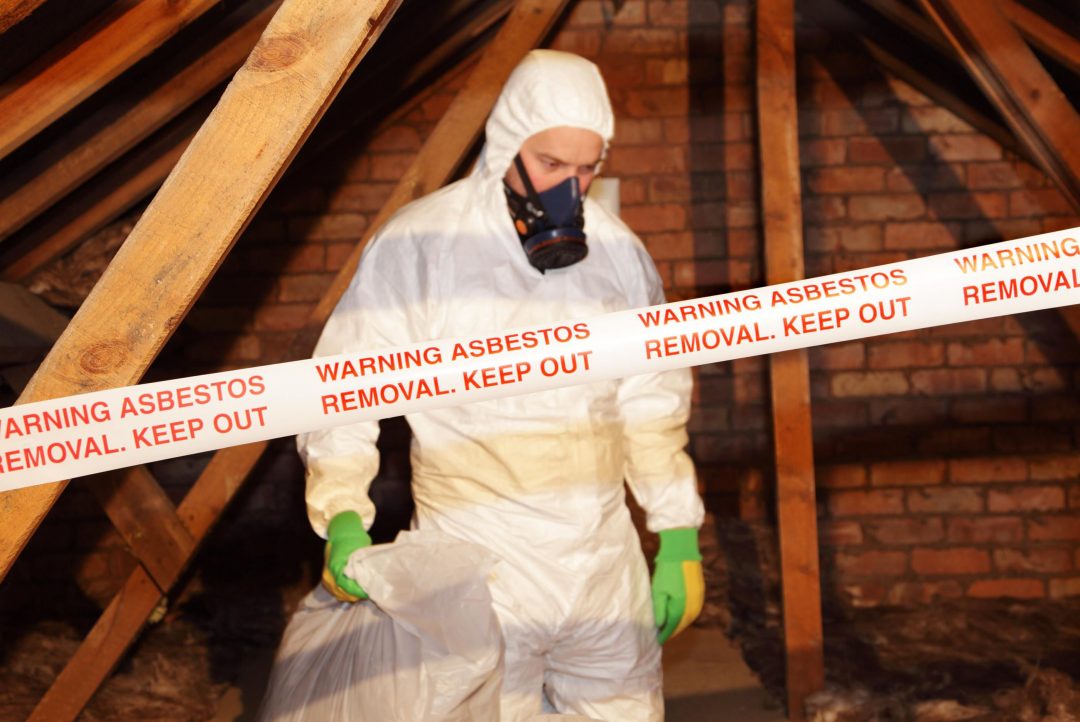As reported by CBC one year ago, Canada has pledged to follow the path that more than 50 countries have already taken and ban asbestos-containing products in 2018. WorkSafeBC calls asbestos the “Hidden Killer” and recommends all removals be conducted by trained experts.
FULL ASBESTOS BAN, CHANGED CODES AND REGULATIONS EXPECTED BY 2018
CBC, DEC 15, 2016
With over 100 year of combined experience in asbestos removal, the NorHaz team is full of Asbestos Specialists. We asked them 5 burning questions we had about asbestos:
Where is the most common location you find dangerous asbestos in your job?
Asbestos fibers were introduced or manufactured into thousands of materials commonly found in structures. Asbestos fibers are released at the time asbestos containing materials are disturbed, damaged or dilapidated.
The most common location asbestos containing materials were used are wall, ceiling finishes and floor coverings. The most visually identifiable materials would be vermiculite insulation and furnace duct joint sealants. The duct joint sealant looks like a white cloth tape or a colored material that looks like silicone.
Where is the last place someone would expect to find asbestos?
There is an asbestos containing packing in the bell and spigot joints in cast iron sanitary sewage pipes.
Old concrete pipes that carry drinking water to structures has an asbestos content. These pipes deteriorate over time and release asbestos fibers into our drinking water. The best knowledge of the day says asbestos fibers in drinking water does not pose a risk to our health. There is currently no standard for an acceptable amount of asbestos fibers suspended in water.
What responsibilities do home owners have that have identified asbestos in their home?
If you know there are hazardous materials within a structure you are obligated to report these materials to any trade persons that may be exposed to the materials. All of the regulations are around the protection of employees.
You are obligated to declare any hazardous materials at the time of the sale of a property.
What does the Federal 2018 Asbestos Ban mean?
This ban refers to the import and use of asbestos containing materials. We still import asbestos containing ware plates such as brake pads and clutches in heavy equipment.
Home owners are obligated to have a pre-renovation or pre-demolition hazardous materials survey of the structure completed prior to the start of any renovations and or demolition of a structure where employees could become exposed to hazardous materials.
What everyday products still contain asbestos?
Ware plates on heavy equipment such as brake pads and clutches.
There have been cases where materials are manufactured that have an asbestos content and this asbestos content were not declared drywall recycled in China and exported to the North American market. About 10 years ago a ship full of recycled drywall landed in Florida and testing proved it was asbestos containing.
Testing was done to the forest around the Libby, Montana asbestos mine. The forest was being harvested and some of the trees were turned into OSB plywood. This plywood was determined to be asbestos containing. The mine contaminated the surrounding forest so extensively that asbestos fibers grew into the trees.
Asbestos Health & Safety is Our #1 Job
NorHaz is 100% WorkSafeBC compliant so you know that you and your family’s safety is our #1 priority. If you live in a home that was built or renovated prior to 1990, you may wish to use our inspection diagram to conduct your own asbestos home inspection.


